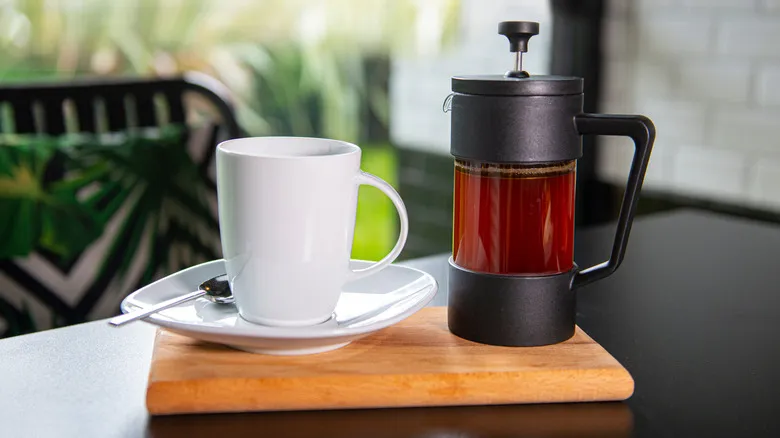How the French press is designed

Although French press pots are available in a variety of sizes, colors, and materials, fundamentally, a press pot remains a press pot. They typically feature a brew carafe made of glass, stainless steel, or plastic, along with a plunger top equipped with a movable mesh screen that pushes the coffee grounds to the bottom and keeps them contained while serving. The design is so intuitive that anyone can easily learn to use it. In fact, the primary instruction for brewing coffee is simply in the name: Press it down!
However, one drawback is that coffee brewed in a press pot doesn't stay fresh for long, as it cools quickly and can become bitter if left to sit for too long.
How the pour-over device is designed

Pour-over devices, in contrast, come in a remarkable variety of designs, each with subtle differences from the others. These variations can make it quite easy to get lost in comparisons. Some pour-over brewers feature flat or smooth sides, like a Chemex, while others have ridges or ribs on the interior, which help keep the filter from resting completely against the walls of the brewer.
Some pour-over models taper to a cone shape at the bottom, while others remain flat. They may have a single large hole, a small hole, or multiple holes — each design choice serves a specific function, often related to brewing speed (larger hole = quicker brew) or extraction efficiency (smaller or fewer holes = greater extraction potential). You can certainly delve deeply into your preferences, or simply choose the one that appeals to you and enjoy your coffee, because, at the end of the day, the essential instruction for brewing is right in the name: Pour the water over your coffee!
Which coffee appliance is faster
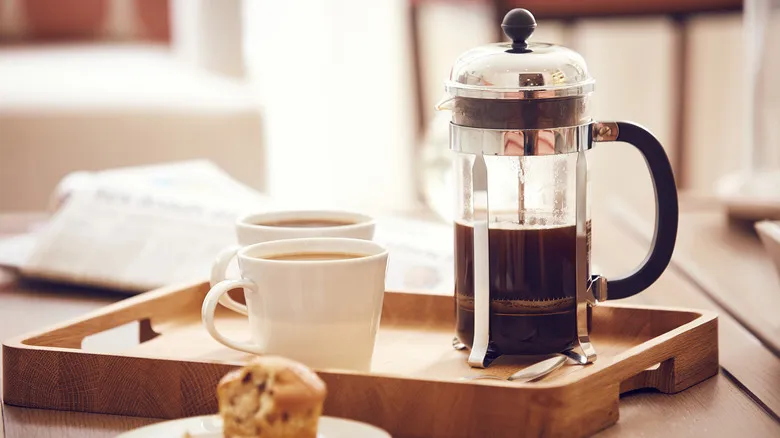
Except for espresso, which can be prepared in 30 seconds or less, most other coffee brewing methods typically require a similar duration, usually ranging from three to five minutes. This includes both French press and pour-over coffee, though the key difference between them in terms of time lies in the level of active versus passive involvement in the brewing process.
For a French press, preparation is crucial. Coffee beans are ground to a relatively coarse consistency (slightly chunkier than coarse sea salt) and placed at the bottom of the press. Hot water, just off the boil, is then added to the desired level, and a timer is set for about four minutes. Once the coffee and water are combined, all that’s left to do is wait and then press down the plunger to halt the brewing.
Many find it hard to believe that pour-over brewing takes a similar amount of time—three to five minutes—because its predominantly active nature can make it feel longer. The process begins with a "bloom," where the grounds are initially saturated with water, followed by regular pulses of water throughout brewing. Ultimately, how you perceive the passage of time—whether standing still or in constant motion—will influence your experience.
Which device is easier to clean
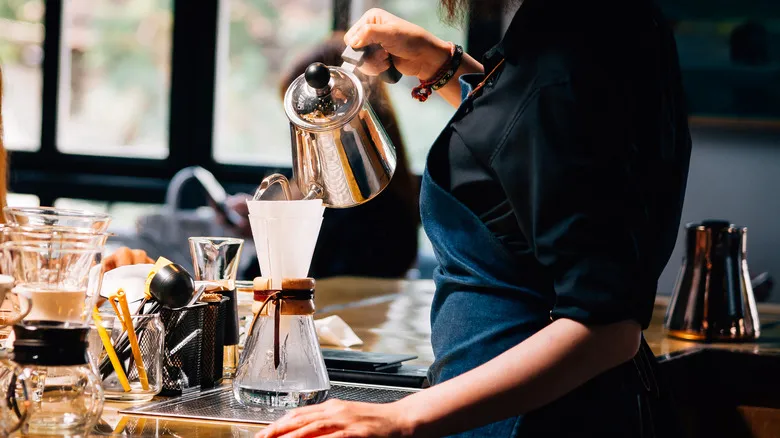
While the French press may seem to have the upper hand so far, this could be the category that shifts the balance. A pour-over brewer offers a straightforward cleaning process—just take out the filter with the grounds and toss or compost it. In contrast, a French press is filled with loose grounds that must be scraped, strained, or otherwise magically extracted from the bottom.
Simply rinsing them out often proves ineffective, as the coarse grounds can easily clog drains or create a mess in the sink. Additionally, they tend to be wet enough to leak all over a trash bag or can. A nearby compost bin can be a helpful solution, but if you're not one to save food scraps, this can quickly become a hassle.
Which coffee appliance is more convenient to use

Alright, let’s be honest: neither of these brewing techniques is as effortless as using a single-serve machine or grabbing a cup from your favorite café. However, they don’t require a significant investment of time or effort. Both methods are relatively quick and become easy once you get the hang of them, plus you can lounge around in your pajamas (or even less) while waiting for the timer to finish.
Some people might argue that making a pour-over is more complex, while others might claim that cleaning a French press is a hassle. Ultimately, though, we know that the key factor in choosing between them comes down to one thing—taste.
Does French press or pour-over coffee taste better?
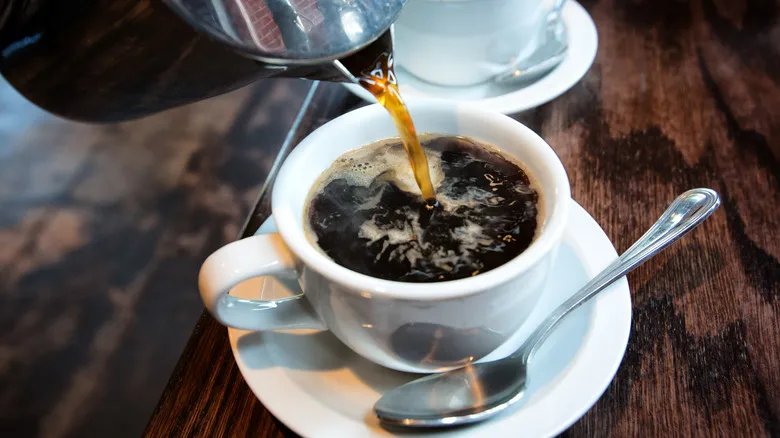
The primary distinction between these two brewing methods lies in the final cup, which is ultimately where it counts. French press coffee, due to its extended full-immersion brewing technique and absence of a paper or cloth filter, typically results in a heavier body, often described as "rich" or creamy. Some coffee enthusiasts may find this thick mouthfeel distracting, overshadowing the coffee's other qualities. Additionally, the brewing method can lead to somewhat muddled flavors, diminishing the subtleties of more delicate coffees. However, for those who enjoy a robust, bold brew that invites leisurely sipping, the French press is an excellent choice.
Conversely, the filters used in most pour-over brewers effectively trap sediment and coffee oils, resulting in a drink that is generally lighter and silkier on the palate—more akin to a sheet than a blanket. The clarity achieved with these brewers allows a coffee's profile to truly stand out; fruity notes become more pronounced, and sweet coffees taste even sweeter. However, if you tend to add sugar or milk, these nuances might get lost in the mix.
So, the question remains: Who claims the final victory in the brewing showdown between the French press and pour-over? That’s for you to determine.
Recommended
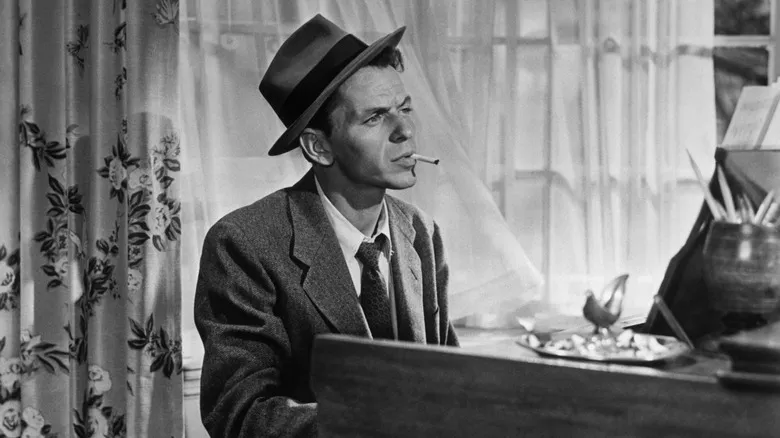
Frank Sinatra's Favorite Cocktail Was A Simple Affair
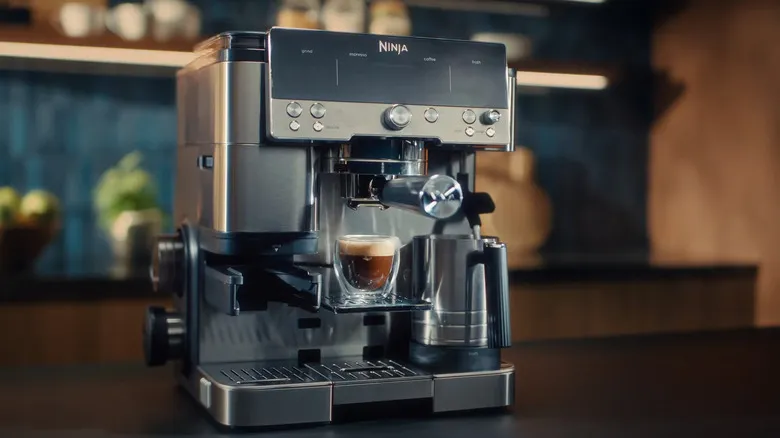
Ninja Luxe Café: It's $500, But Here's Why That's Actually A Steal
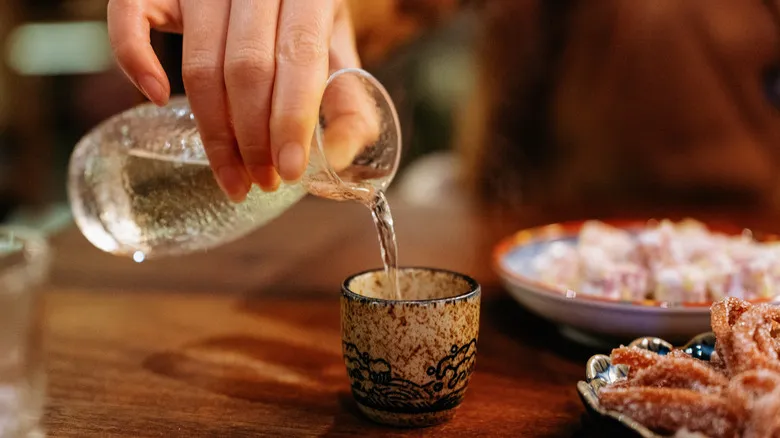
Why Traditional Japanese Sake Making Was Recognized By UNESCO
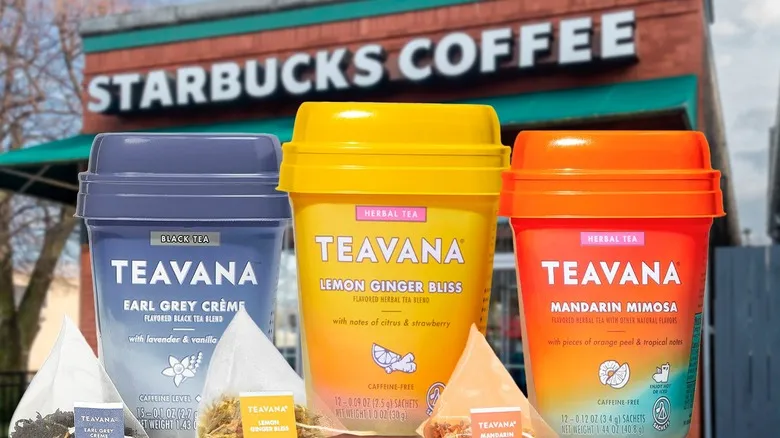
The Rise And Fall Of Teavana
Next up

